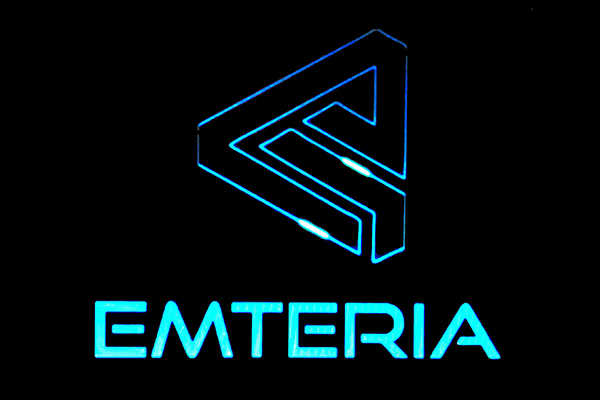Embedded Linux powers a myriad of devices, from home gadgets to industrial systems. This blog covers the essentials and deep insights of Embedded Linux, and how companies like Geniatech utilize it for advanced solutions in IoT, automation, and more.
What is Embedded Linux?
Embedded Linux is a version of the Linux operating system tailored for embedded systems. These are specialized computing devices designed for specific tasks, often with constraints like limited resources and real-time requirements. Think of devices like your smart thermostat, the infotainment system in your car, or industrial machines. They all rely on embedded systems to perform their dedicated functions efficiently.
Linux, being open-source and highly customizable, is an excellent fit for these devices. It provides the flexibility to strip down unnecessary components and optimize the system for specific hardware and application needs. This makes Embedded Linux not just a powerful tool but also a cost-effective solution for developers.

Why Use Embedded Linux?
Embedded Linux offers several advantages that make it a popular choice for embedded systems:
- Customizability: You can tailor it to include only the essential components needed for your application, resulting in a lightweight and efficient system.
- Real-Time Capabilities: With real-time extensions, Linux can meet strict timing and responsiveness requirements.
- Wide Hardware Support: Linux supports a broad range of hardware platforms, from microcontrollers to powerful processors.
- Open Source: The open-source nature means no licensing fees and the freedom to modify and adapt the system as needed.
- Rich Ecosystem: There are numerous tools, libraries, and frameworks available, making development more accessible and faster.
How Do You Build an Embedded Linux System?
Building an embedded Linux system involves several steps, from selecting the right build system to configuring the kernel and integrating applications. Let’s break it down:
- Choosing a Build System
- Yocto Project: Yocto is a comprehensive toolkit for creating custom Linux distributions. It provides a high degree of customization, allowing developers to define every aspect of the OS through recipes and metadata. It’s perfect for complex projects that need fine-tuned control over the final image.
- Buildroot: Buildroot is simpler and faster than Yocto, making it ideal for smaller projects or those needing quick iterations. It generates a complete embedded Linux system quickly and with less overhead.
- OpenWRT:OpenWRT offers a fully writable filesystem with package management, enabling extensive customization. It’s particularly advantageous for networking tasks, providing robust security and performance optimizations. OpenWRT is versatile and widely supported, making it a strong choice for both personal and commercial applications.
- Configuring the Kernel
The kernel is the heart of the operating system. In embedded Linux, you often need to customize the kernel to support specific hardware and optimize performance. This involves selecting the right drivers and configuring kernel parameters to suit the application’s needs.
- Integrating Applications
After setting up the kernel, the next step is integrating the necessary applications and libraries. This could include utilities for file management, networking tools, and custom applications specific to the device’s functionality.
What About Real-Time Performance of Embedded Linux?
Real-time performance is crucial for many embedded applications, such as industrial automation and robotics, where precise timing is essential. There are several ways to achieve real-time performance in Embedded Linux:

- Dual Kernel Architecture
In this setup, Linux runs alongside a real-time kernel (such as Xenomai) on the same hardware. The real-time kernel handles time-critical tasks, while Linux manages non-real-time functions. This allows for both high performance and rich feature sets in a single system.
- RT Preempt Patches
The PREEMPT-RT patch set transforms the standard Linux kernel into a real-time kernel. By reducing latencies and making the kernel preemptible, it allows Linux to handle real-time tasks directly. This approach is simpler than dual kernel but may not achieve the same level of real-time performance.
How is Power Management Handled by Embedded Linux?
Effective power management is crucial, especially for battery-powered devices. Embedded Linux provides several techniques for managing power efficiently:
- Dynamic Voltage and Frequency Scaling (DVFS)
DVFS adjusts the voltage and frequency of a processor based on current workload demands, reducing power consumption during idle periods. This helps balance performance and power usage effectively.
- Suspend and Resume
Embedded Linux supports various power states, allowing devices to enter low-power modes when inactive and quickly resume full operation when needed. Proper implementation ensures minimal power usage without sacrificing responsiveness.
- Power Management Frameworks
Tools like PowerTOP and cpufrequtils help developers analyze and optimize power consumption. PowerTOP identifies processes that consume significant power, while cpufrequtils manages CPU frequency scaling policies.
How Can Security Be Enhanced by Embedded Linux?
Security is paramount, especially in applications like medical devices and automotive systems. Embedded Linux provides several advanced security measures:
- Trusted Execution Environment (TEE)
TEE provides a secure area of the main processor to execute trusted applications, isolated from the main operating system. This ensures that sensitive operations are protected from malicious software.
- Security-Enhanced Linux (SELinux)
SELinux implements mandatory access controls (MAC) to enforce strict security policies. This limits the actions that processes can perform, reducing the risk of exploits and unauthorized access.
- Secure Boot
Secure boot ensures that only authenticated software can run on the device. By verifying the integrity and authenticity of the bootloader and kernel, it prevents unauthorized code from being executed.
What Are the Emerging Trends in Embedded Linux?
Embedded Linux is continually evolving, and several emerging trends are shaping its future:
- Edge Computing
As edge computing grows, Embedded Linux is increasingly used in edge devices that process data locally rather than relying solely on cloud computing. This requires efficient handling of data streams, robust networking capabilities, and enhanced security.
- Machine Learning on Embedded Devices
Integrating machine learning models into embedded systems is becoming more common. Frameworks like TensorFlow Lite and ONNX Runtime enable the deployment of AI models on resource-constrained devices, leveraging Embedded Linux for inference tasks.
- Containerization
Containers, popularized by Docker, are making their way into embedded systems. Tools like BalenaOS provide containerized environments for embedded devices, simplifying application deployment and management while maintaining isolation and scalability.

How Geniatech Leverages Embedded Linux
Geniatech harnesses Embedded Linux to power its wide range of embedded computing and IoT solutions, enhancing their functionality, flexibility, and efficiency. Here’s a concise overview of how they achieve this.
Customizable Hardware Solutions
Geniatech provides ARM-based System on Modules (SoMs) and Single-Board Computers (SBCs) that run on Embedded Linux. These devices are tailored for various applications, offering high performance and energy efficiency. Embedded Linux allows for extensive customization, enabling developers to optimize the hardware to meet specific needs while ensuring security and reliability.
Advanced Build Systems
Geniatech supports the Yocto Project, a powerful build system for creating custom Linux distributions. Yocto allows precise configuration of Linux systems, ensuring that only essential components are included. This optimization is crucial for developing efficient and lightweight embedded systems, reducing development time and costs.
Real-Time Capabilities
In industrial applications where precise timing and reliability are essential, Geniatech leverages the real-time capabilities of Embedded Linux. Real-time Linux extensions ensure that their solutions can handle critical operations with high accuracy and minimal latency, making them suitable for manufacturing automation and robotics.
IoT and Edge Computing
Embedded Linux is central to Geniatech’s IoT gateways and edge computing solutions. These devices process data locally, reducing reliance on cloud services and improving security and response times. Embedded Linux provides the scalability and flexibility needed to support various IoT protocols and standards, making Geniatech’s solutions versatile and adaptable to diverse IoT environments.
By leveraging Embedded Linux, Geniatech delivers robust, customizable, and scalable solutions that meet the high demands of modern embedded systems, from industrial automation to IoT and edge computing.
Conclusion
Embedded Linux is a powerful and adaptable operating system that underpins many of the embedded systems we rely on today. From its customizability and real-time capabilities to advanced build systems and security enhancements, Embedded Linux offers a robust foundation for a wide range of applications.
By understanding and leveraging these advanced features, developers can create sophisticated, efficient, and secure embedded solutions. Whether you’re working on consumer electronics, industrial automation, automotive systems, or cutting-edge IoT devices, Embedded Linux provides the tools and flexibility needed to succeed.
As the field of embedded systems continues to evolve, staying informed about the latest advancements and trends in Embedded Linux will be crucial for innovation and success. Whether you’re a seasoned developer or just starting, Embedded Linux offers a rich landscape of possibilities to explore and harness.

